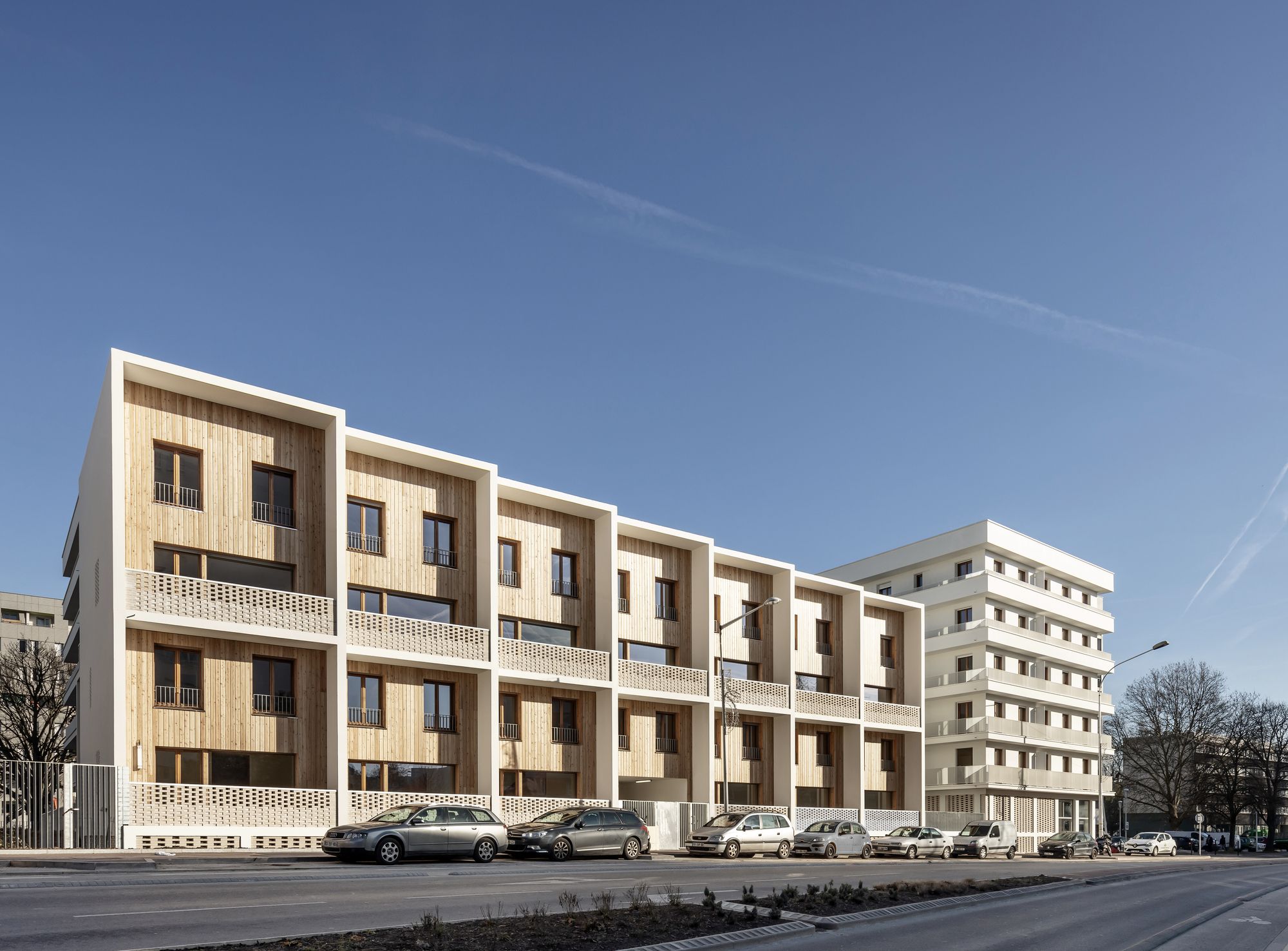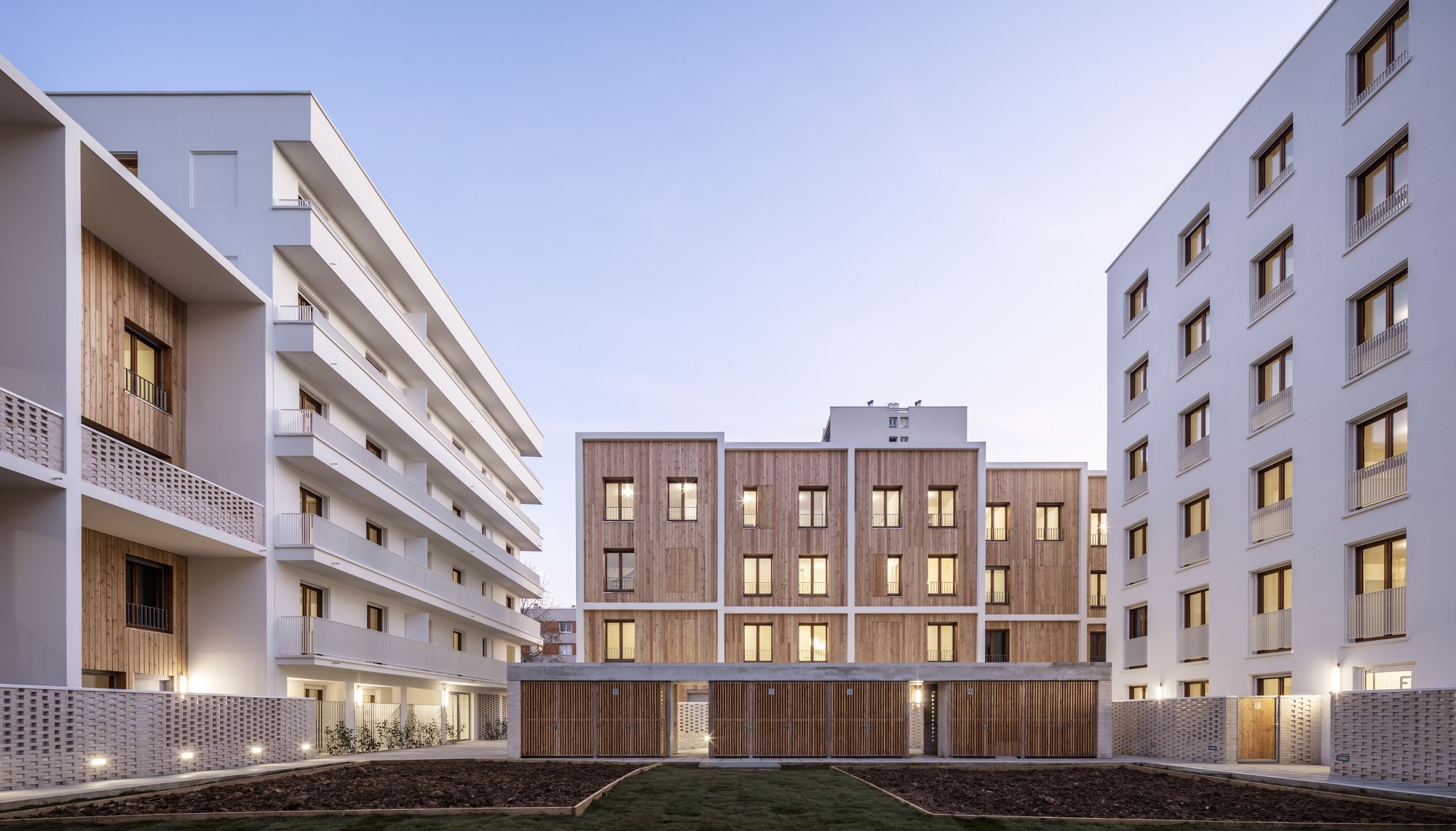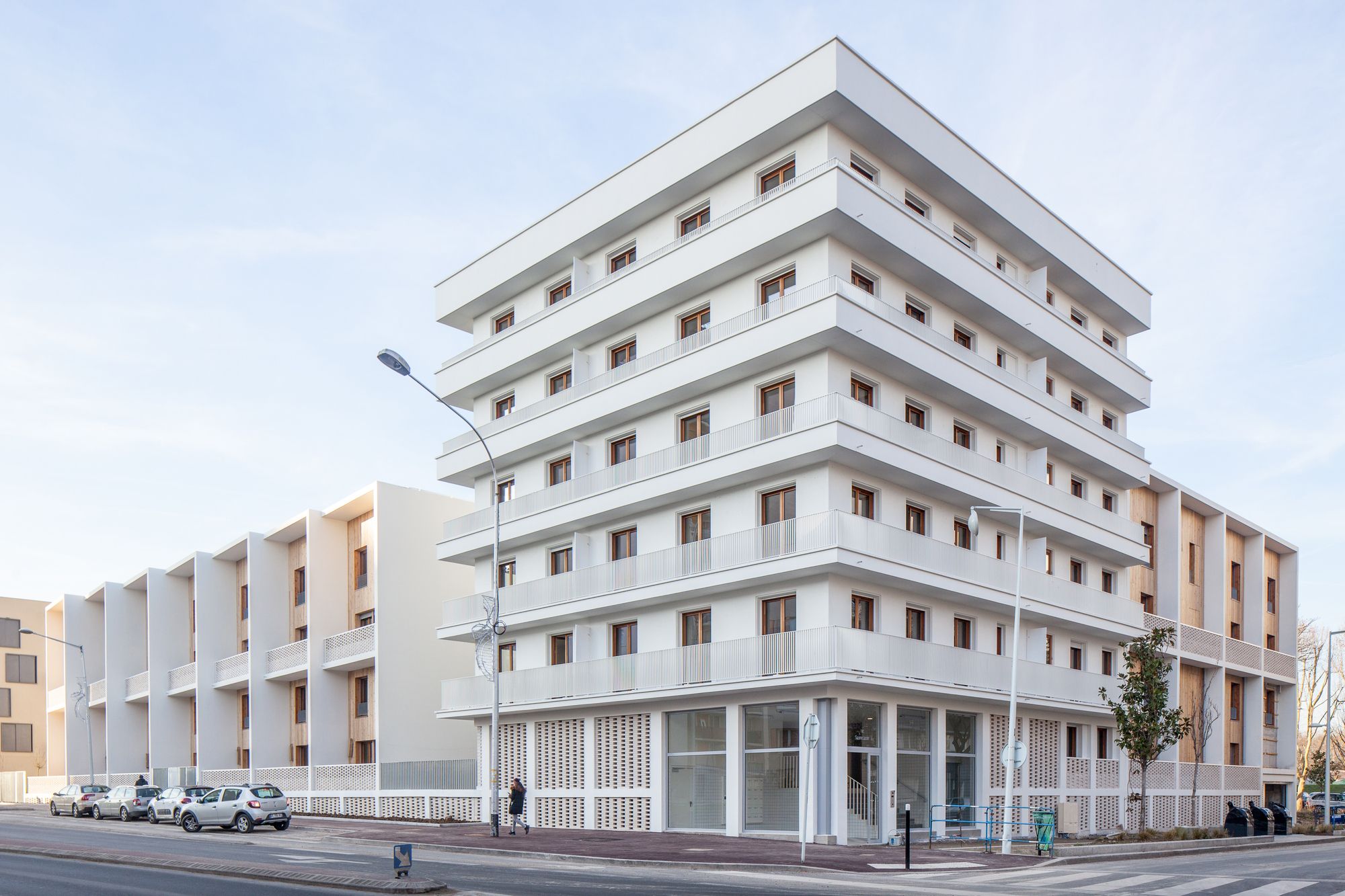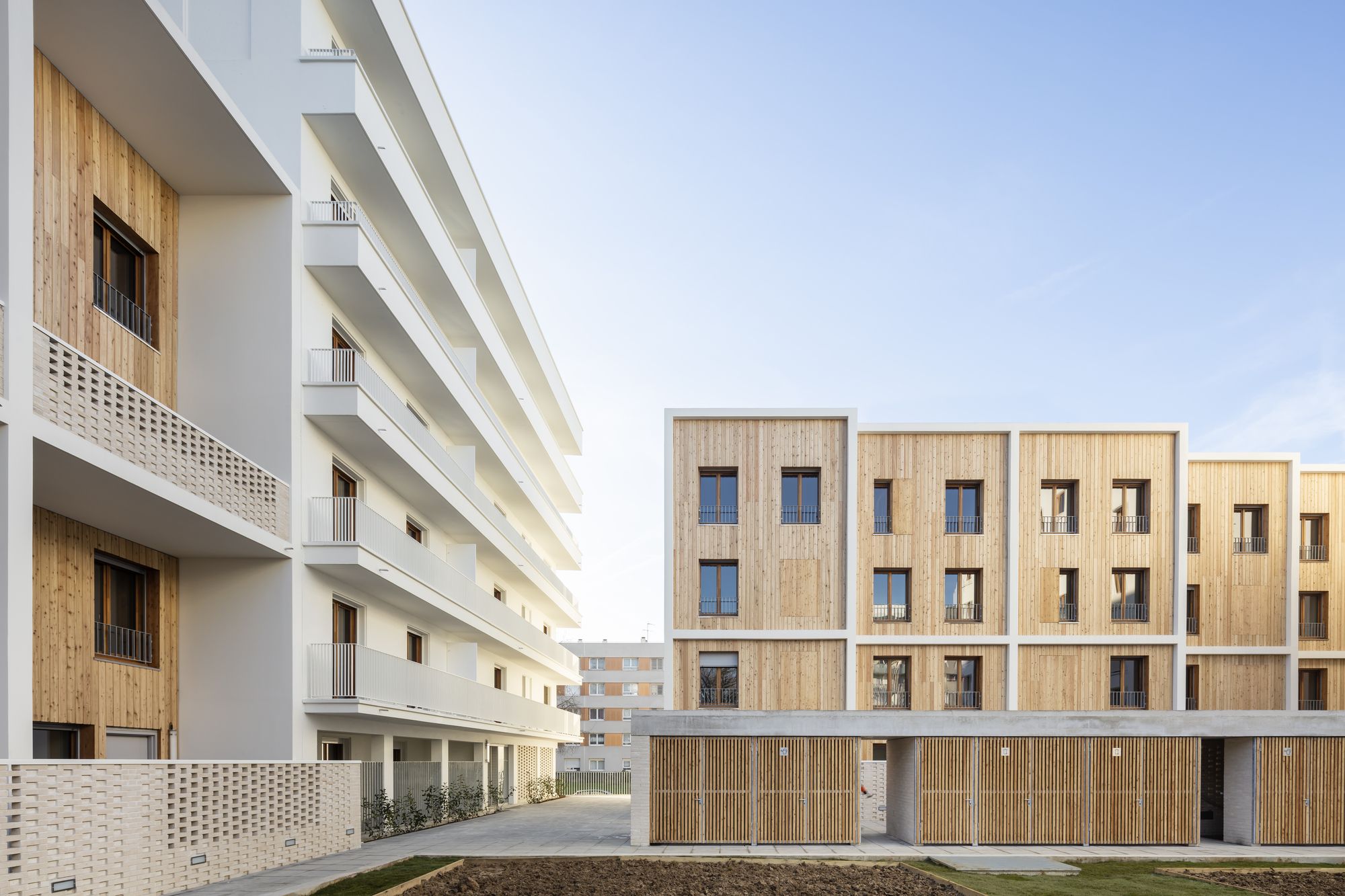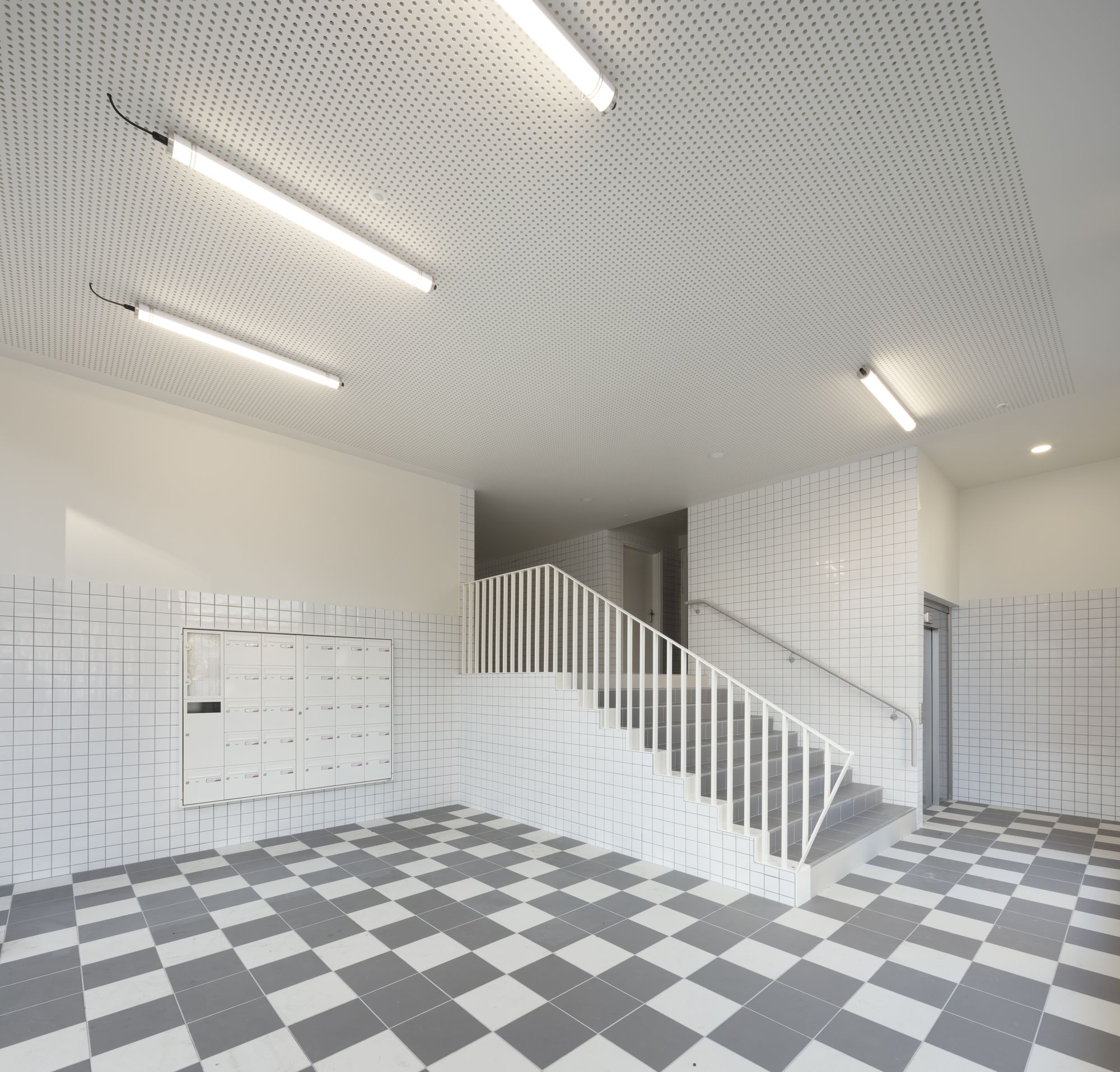Designed by JTB.architecture + MaO architectes, Building on the Cité de 4000 estate could not be undertaken without a detailed analysis of the community, cultural, economic, urban and architectural expectations. It should avoid the existing failures linked to past developments that don’t consider the potential landscape and its appropriation by residents. This concern is reflected in the spatial layout of new buildings so that the residents appropriate their homes and living environment. The proposal gives a new identity to the neighbourhood while integrating this diversity currently missing at all scales of the project.
The heterogeneity of the blocks provides the cityscape with a multi-faceted «skyline» that avoids monotony and blocksiting on the streets. The different volumes are located on the site to create a maximum of vistas for the housing units while creating a minimum of blanks, co- visibility between them or with their surroundings. The configuration of the volumes on the site generates generous sunlight provision to the housing units and the central garden. Summer and winter comfort is a determining factor in the building layout to optimise the thermal performance of walls and to build with an environmental approach. Siting provides housing units with different orientations and thus provides no rear elevation nor blank gables.
Two setbacks also bring air and more daylight to the entire block, either from Avenue Henri Barbusse or from the mall towards the Grand Verlaine. They create a porosity between public spaces and the block center, promote vistas and weave links between the city and the shared community spaces.
The project proposes two clearly identifiable typologies: the «building» and the «superimposed townhouse». The articulation of these two scales is done through porosities and built continuities up to the site boundaries. These principles take form through a simple configuration that articulates three distinct elements: to the west, on the boundary that separates it from the neighbouring parcel, a 6-story building and, on Avenue Henri Barbusse, a 4-story terrace of superimposed duplex houses. On the southeast corner of the site, a 6-story building is attached to a 4-story terrace of superimposed duplex houses.
The access to the block centre is through a central deck that serves all the buildings. These alleys are lined with brick mashrabiya walls and the planning of open spaces in the block centre promotes the use of the interior garden, more than 150m2, which becomes a proper market garden space. The brick and metal joinery screen to private outdoor spaces create the transition between community life and the home. They provide the possibility for the home to open out or to remain private. On the blocks of flats, the project varies the heights of the window sills, depending on the floor level, to increase the daylight provision and to frame a vista, either more vertical or more horizontal according to the urban landscape.
The diversity of volumes, architectures and uses is the underlying principle of the proposal. The project provides multiple readings of the exterior and interior spaces of buildings that facilitate appropriation by its residents. The success of the project will be determined through the use of the shared spaces that are the essential means for community living.
Project Info:
Architects: JTB.architecture, MaO architectes
Location: France
Area: 4615.0 m²
Year: 2019
Photographs: Arnaud Schelstraete, Fabien Brissaud
Manufacturers: Knauf, Nordlux, Häussermann, Beton Solutions Mobile, Blocstar, Millet
Project Name: 71 Social Housing Units La Courneuve
